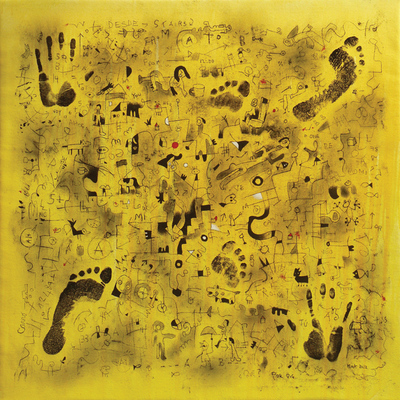Art Without Borders: Encountering Cuba
By Andrea Shea
Before traveling to Havana in late 2012 on a trip organized by New England gallerist Michelle Wojcik, envious American friends raised an insistent question: “How does an artist make a living in Cuba?” I’d been asking myself the very same thing.
I’d read about Cuban artists’ livelihood, and in 2011 spoke in person with a Havana-based artist about his means of support in the notoriously closed yet famously creative country. I met Luis Rodríguez (NOA) thanks to a loosening of travel restrictions for cultural exchanges. Wojcik sponsored NOA’s visit so he could open a show of his work at Galería Cubana, her retail space in the South End. It was his first visit to the United States.
NOA told me about “his world” as he called it, one filled with art-making, beauty, scarcity, repression, and hope. There seemed to be a lot of hope; I could sense it nearly jumping off his canvases. Yet any preconceived notions about living, working, and earning money as an artist on the ground in Cuba were challenged by my five-day Havana crash course. One answer to my initial question is that Cuban artists earn a living with help from their government. And increasingly ours.
Cuba is in the midst of serious change. In the past two years, the government of President Raúl Castro has instituted a slew of reforms. One of the most dramatic allows a limited number of Cubans to operate small, independent businesses. Cubans are getting their entrepreneurial feet wet in everything from elegant restaurants to makeshift street stalls hawking Buena Vista Social Club CDs.
In many ways, Cuban artists have paved the way for the latest experiments. They were permitted to engage in private enterprise starting in the 1990s, a privilege coinciding with the so-called “Special Period,” resulting from the fall of the Soviet Union. That geopolitical crash left Cuba debilitated spiritually and economically. Many Cubans fled. In an attempt to save his devastated island, Fidel Castro made the decision to permit US dollars to circulate freely. Tourism rose (along with a lot of black-market dealing) and art was recognized as a significant export for the Cuban economy. As the country crawled toward recovery in the late 1990s, artists were legally granted the right to be self-employed. An acquisitive international art market eagerly came calling.
Jumping to the present, one might consider Cuban artists like NOA pioneers in his country’s campaign to nurture a creative economy. With some practice operating a capitalist paradigm within their socialist country, it appears the Cuban government and its people are banking on cultural tourism more than ever, billing Havana as a “living museum.” Most foreign visitors come from Canada (more than one million annually) but all of the Cuban artists I interviewed see the American market, a mere ninety miles away, as understanding their work and being most interested in paying for it. Both governments are fine with this. Americans aren’t allowed to buy Cuban cigars or rum, but because of an exception in the US trade embargo, they can buy art as a cultural asset. Dramatic foreign art consumption happens whereas Cubans, who earn about twenty dollars a month, can’t afford to.
Wojcik founded her gallery five years ago and holds one of only thirty licenses issued by the US Treasury Department that allows her to import and sell Cuban art. The gallerist arranged for our group to meet several Cuban artists whom she currently represents, a mission dedicated to reminding us of differences between a country’s government and its people, while also serving Wojcik’s ongoing efforts to support her stable of hard-working artists.
One of the only ways for American tourists to visit Cuba legally is on “people to people” cultural exchanges. Hence Wojcik partnered with Silvia Wilhelm of Cuba Puentes, a popular Miami-based company authorized by President Obama in 2011. Wilhelm, who is Cuban-American, strongly supports the opening of economic relations between her two countries. She also hopes for the rise in private enterprise to persist, yet also believes the government’s emphasis on the country’s art and culture is nothing new: “Cuba has a rich culture that didn’t start in 1959 and it’s not going to end tomorrow…”
Creating, preserving, and believing in culture is inherent in Cuba, as is its relentless ingenuity. Everyone seems to be figuring out ways to make things work with what they have. Wojcik often quotes an optimistic Cuban sentiment: “All things can be resolved.”
Andrea Shea is a longtime arts and culture reporter at 90.9 WBUR, Boston’s NPR news station, where she presents a series on art in Cuba. See WBUR.org.
Above: NOA, Stairs from A to B (Nude ascending the stairs), 2012,
mixed media on canvas, 39 3⁄8 x 39 3⁄8″. Courtesy of Galería Cubana, Boston.

